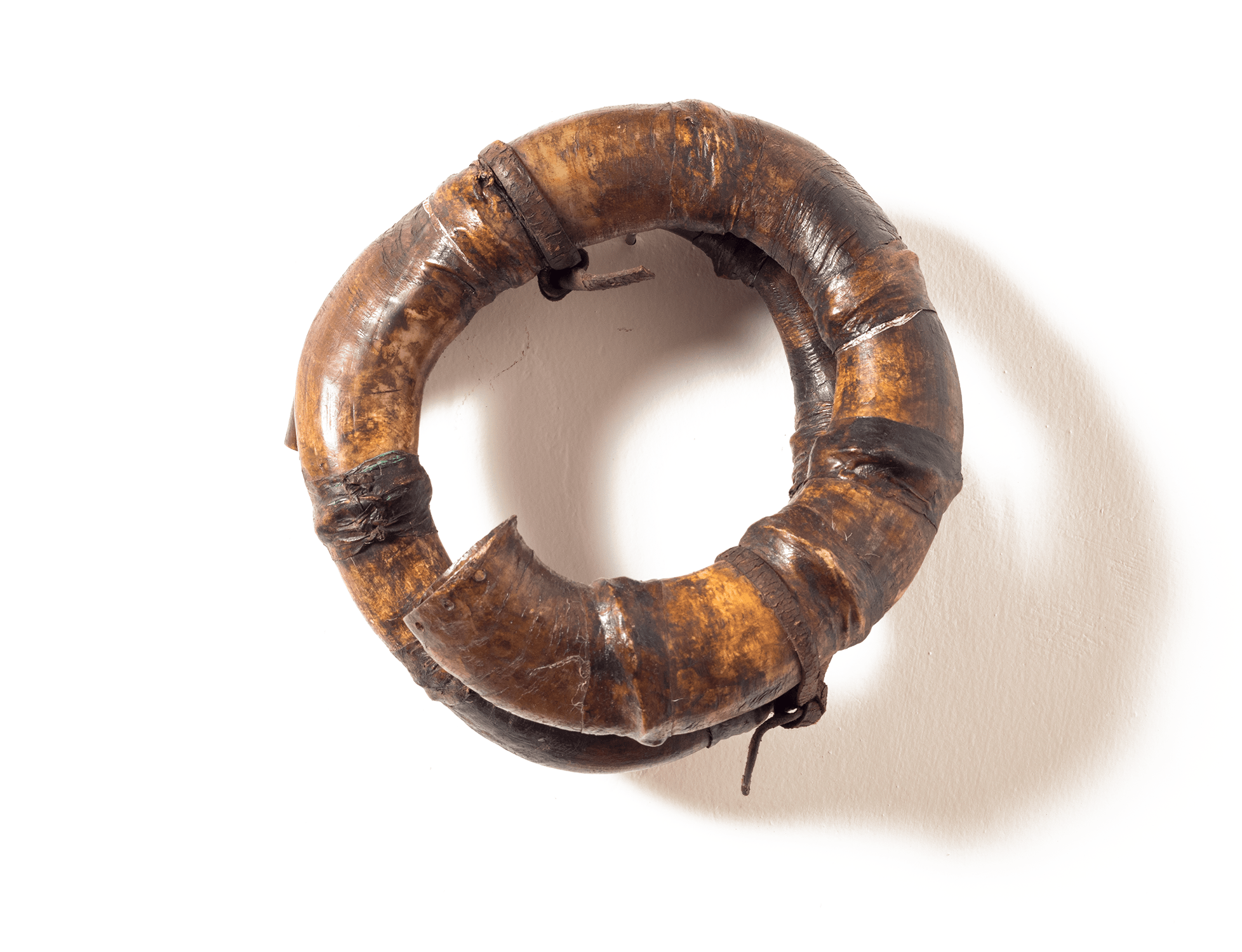
History behind the piece
The "Waqra Puku" or "horn cornet" is a musical instrument of the Andean people whose fascinating voice comes from the vibrating of the lips of a master resounding in intimate harmony with the spiral of horns that carefully united make up the instrument. Also known as Waka-Waqra, or Waqla, this aerophone instrument is capable of uniting an average of fifteen pieces (horns) in superposition and in many cases generating a tube that measures up to one and a half meters.
The cornet is generally shown in a spiral shape, although they can also be found in wavy shapes. They may or may not use an additional mouthpiece, depending on the area. At the time of its manufacture, the pieces are joined to each other by means of nails, then fastening the joints with leather strips that are also reinforced with beeswax to prevent air from escaping. They are considered traditional in Apurímac, Arequipa, Ayacucho, some areas of Cusco, Huancavelica, Junín, Lima, Pasco and Huánuco, taking different names in each place.
To make them sound it is necessary to always take them from only one side. But the Andean soul is not satisfied with the singing of a solitary waqra puku, it always demands the unison of a couple, in accordance with the complementarity of the characteristic dualities of a worldview of millenary roots. That is why not one, but two instruments are built at the same time, one of them made exclusively with the horns on one side and forming the spiral in one direction, and the other with the horns on the other side and forming the spiral in the opposite direction. Thus, one of the waqra puku is considered female and the other male, and they are performed by a pair of musicians in which one is the teacher, the one who guides, and the other is the disciple, the one who follows.
Only by adding the tone of one and the other is that penetrating sound so characteristic of waqra puku achieved. This, finally, is the vehicle on which the infinite melodies with which the beautiful Quechua poems are sung that these cattle towns dedicate to their animals.
Due to the material used in their manufacture, it is known that these horns appeared after the Spanish occupation; however, they are considered among the native instruments because they only replace the old wawko, a musical artifact also aerophone made with the forehead and horns of the American deer called taruka, an instrument that is illustrated in the famous work “New Chronicle and Good Government”. This compendium of 1180 pages and 397 drawn plates, written and illustrated by the indigenous author Felipe Guamán Poma de Ayala, presumably finished writing in 1615 and in it shows the indigenous vision of the Andean world, thus allowing to reconstruct in much detail aspects of Peruvian society after the conquest, as well as illustrating the history and genealogy of the Incas with texts in 16th century Spanish and general Quechua.
Origin: Junín
Measurements: 29,5 cm diameter x 11,6 cm depth
Condition: Excellent
SKU: 0600
Measurements: 29,5 cm diameter x 11,6 cm depth
Condition: Excellent
SKU: 0600
Personal Collection of
MUSEO DE ARTE POPULAR ANDINO
